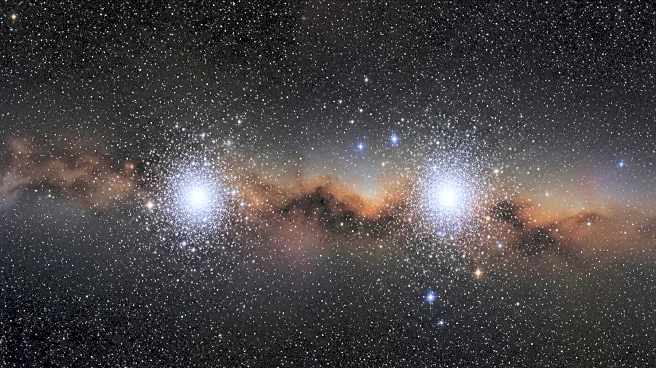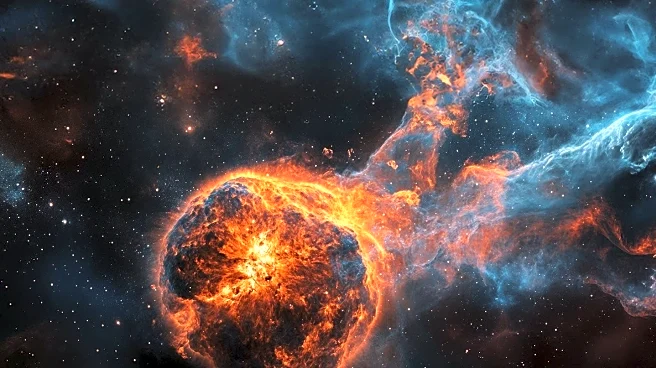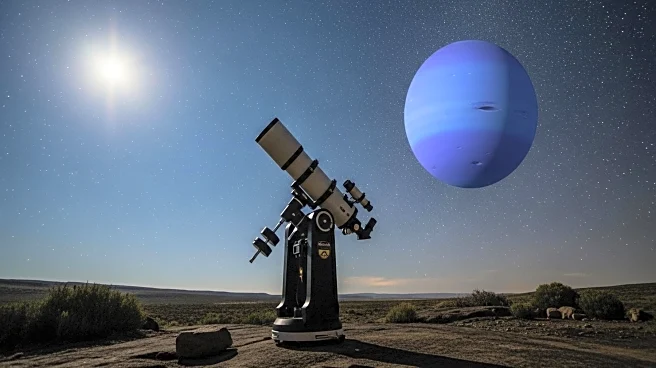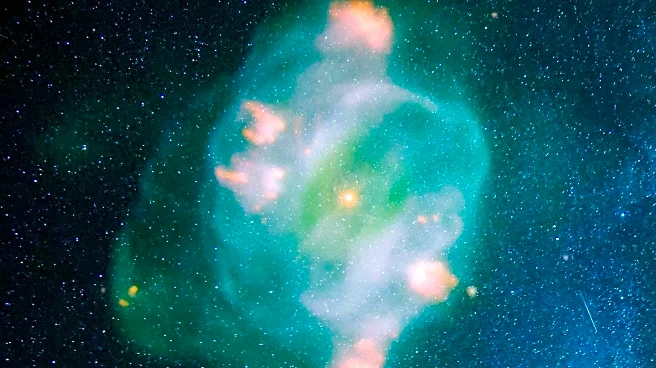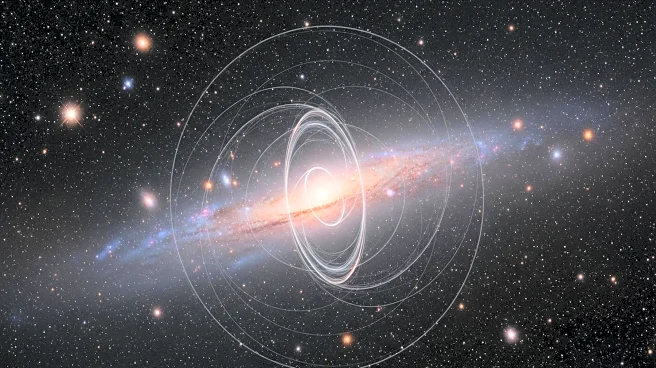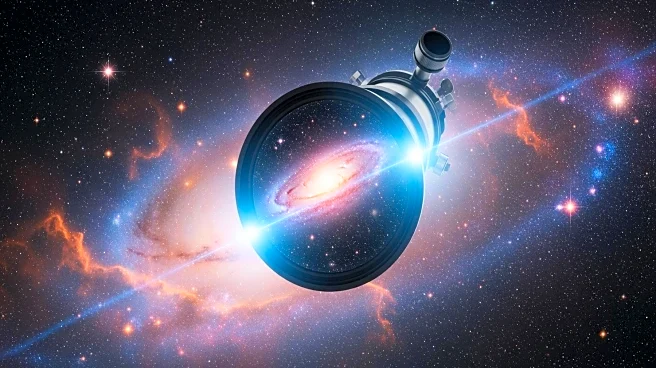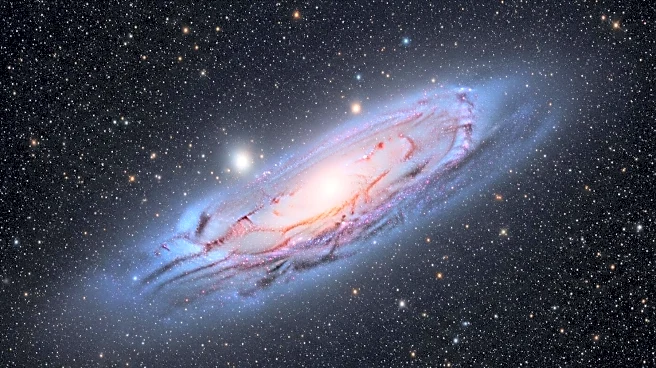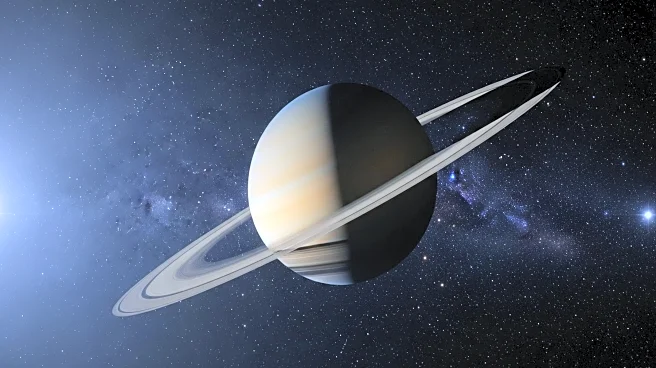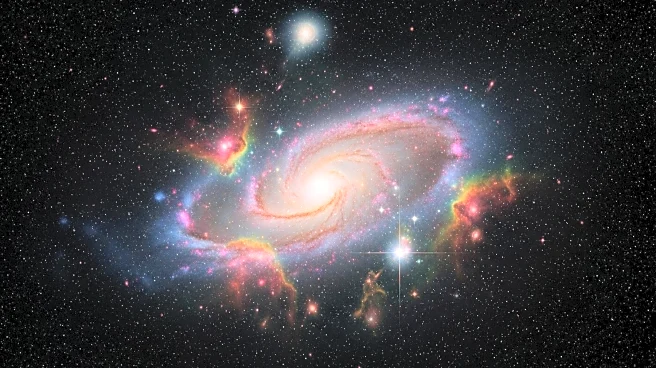What's Happening?
Globular clusters, dense collections of stars bound by gravity, are highlighted in a recent Astronomy Magazine article. These clusters, containing tens of thousands to millions of stars, are often located in galactic halos. The article discusses Omega Centauri, the largest known globular cluster in the Milky Way, visible to the naked eye and containing approximately 10 million stars. M13, the Hercules Cluster, is another notable globular cluster, located about 26,000 light-years away, exhibiting unique visual patterns not always captured in photographs. The article emphasizes the visual appeal of globular clusters when observed through telescopes, particularly Dobsonians with large apertures.
Why It's Important?
The study and observation of globular clusters are significant for understanding the structure and evolution of galaxies. These clusters are among the oldest structures in the universe, providing insights into the early stages of galactic formation. Observing globular clusters can enhance amateur astronomers' appreciation of the night sky and contribute to scientific research by revealing patterns and structures not visible in photographs. The article encourages public engagement with astronomy, promoting educational and recreational activities that can inspire future scientific exploration.

